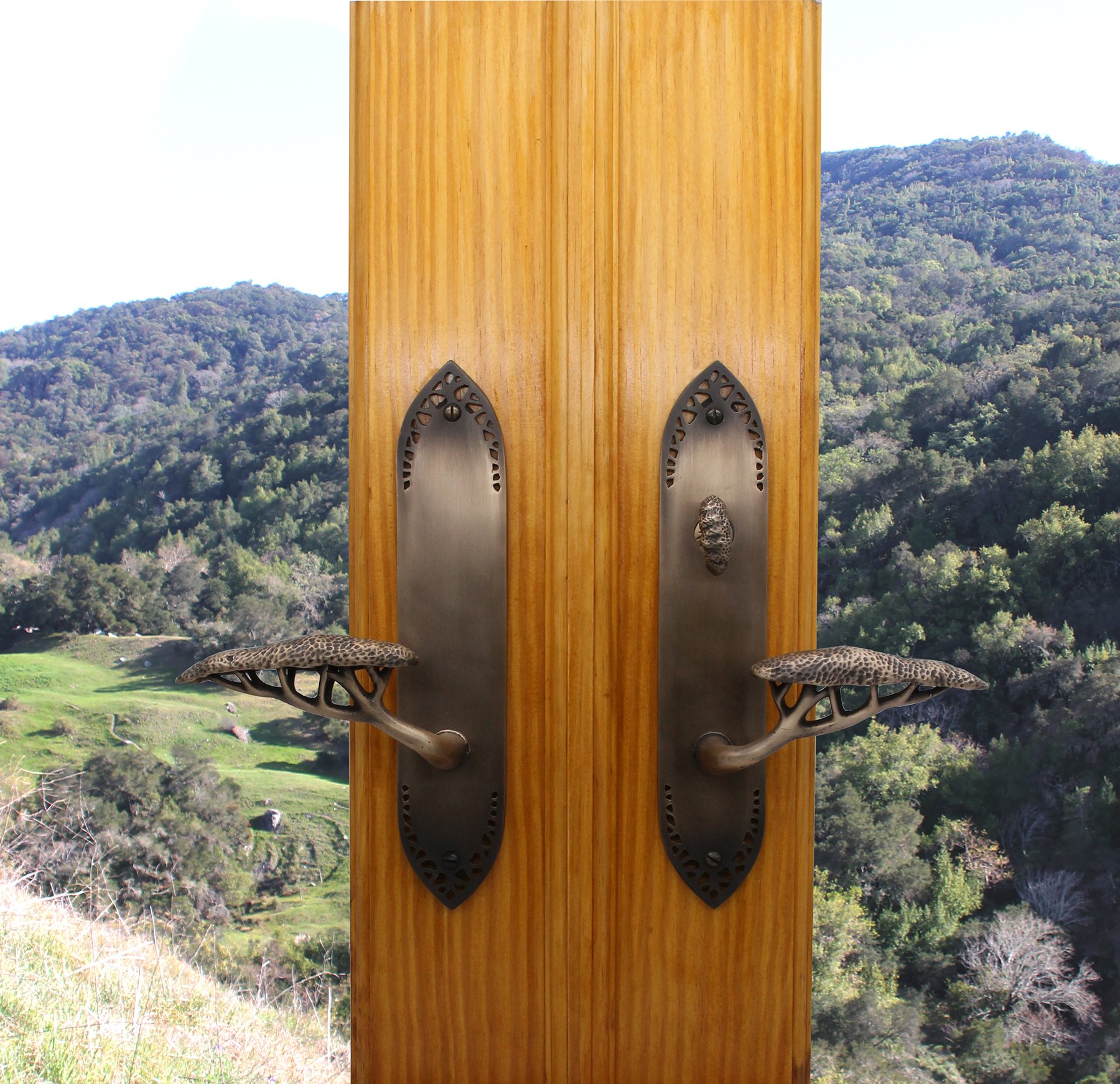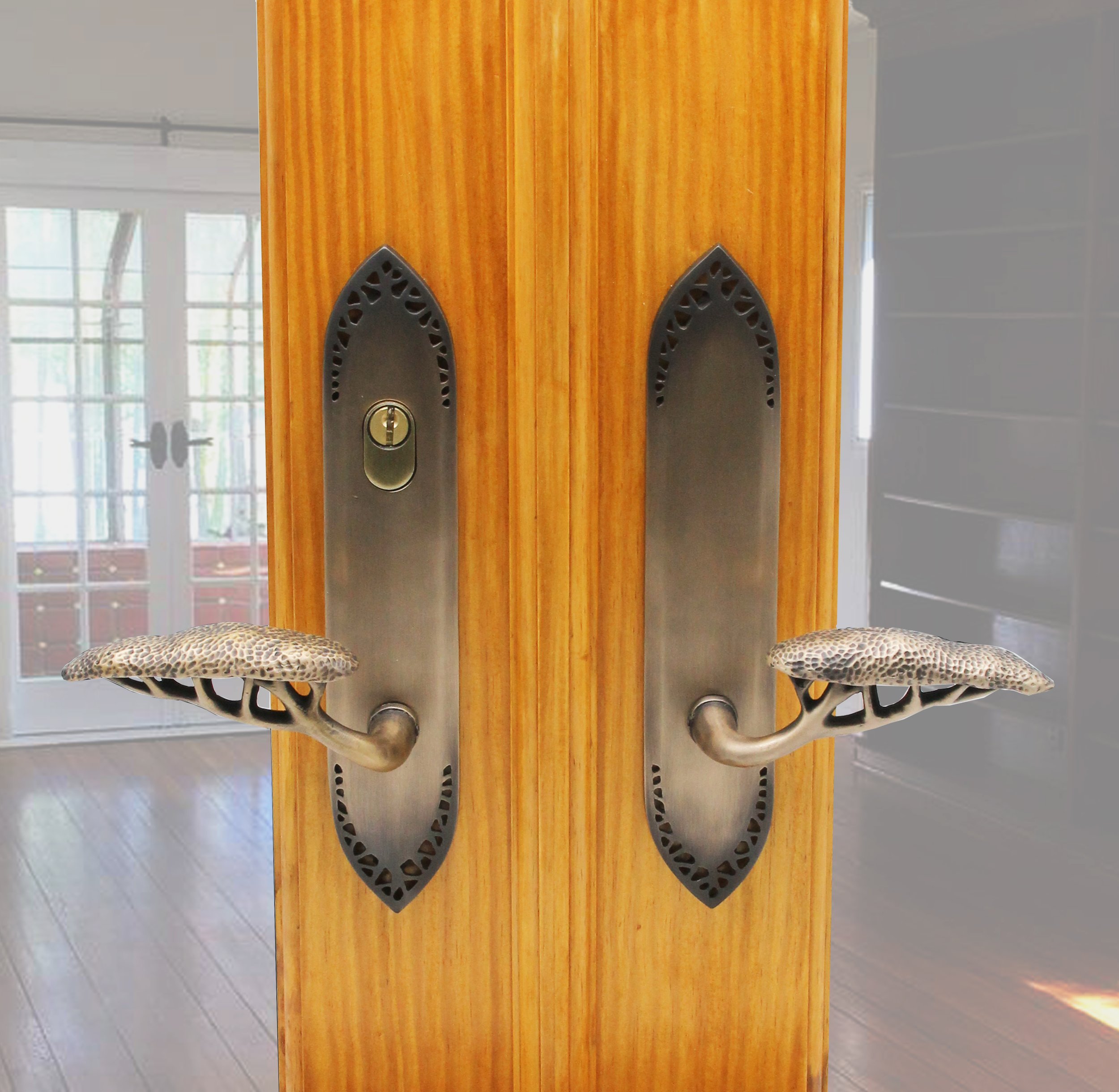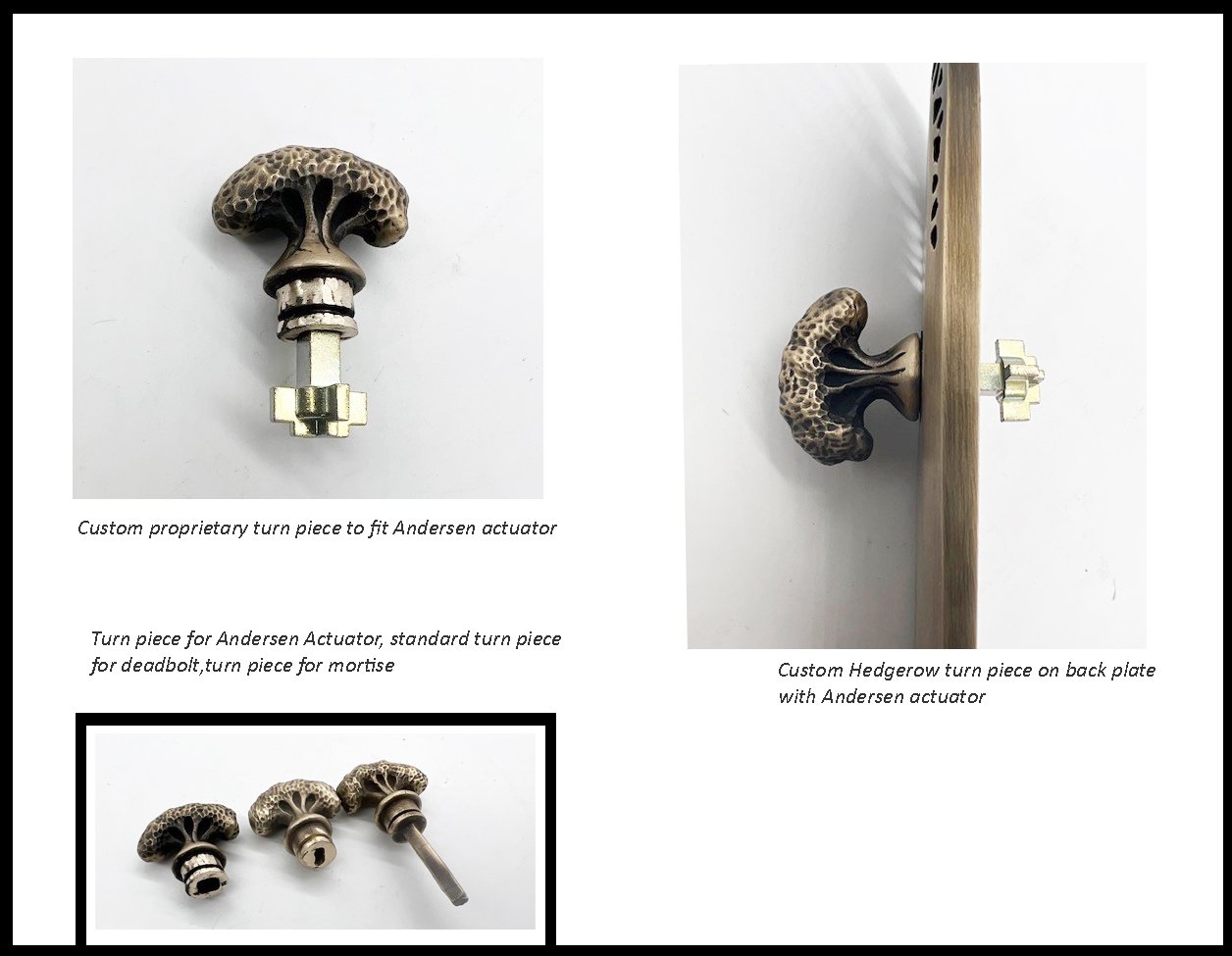We are pleased to announce that we have created two new pieces that will make our existing Willow and Hedgerow multi-point trim suitable for installation with Andersen’s current multi-point lock.
Overview of multi-point lock
The multi-point lock and the mortise lock provide good alternatives for making an entry or patio door secure and which you chose will depend on several factors the most critical being that the multi-point lock usually needs to be installed when the door is being made. The multi-point lock is also designed to be activated by a lever rather than knob or thumb-latch and this is a critical factor in choosing suitable hardware trim.
The multi-point has 3 locking points when the door is a single door and 5 when there are double doors.
The multi-point system has 2 main components. A rod extension mechanism that has an upper and lower section that is installed inside the door during manufacture and a deadbolt unit that the extenders are attached to.
The extenders are activated by a decorative lever that is installed into the central deadbolt unit. When the lever is pushed upwards the extenders act as locking bolts and are thrown upwards and downwards into header and threshold securing the door at these 2 points. A decorative knob or turn piece is installed in the deadbolt box and when turned throws the tongue of the deadbolt into the door jam or in case of a double door into the non-active door.
Decorative Levers Escutcheons and Turn Pieces
Given that the multi-point mechanism is pre-installed during door manufacturer many consumers assume that this means they must also order the trim from the multi-point lock manufacturer, a fact that is far from the truth.
Willow and Hedgerow adapting for multi-point
Our standard turn piece that is used with Accurate’s mortise lock is cast with a fixed spindle that is on the diamond. Our standard turn piece for a deadbolt is cast on the square with a slot. Neither turn piece was suited to the Andersen deadbolt so we created 2 new turn pieces both square and with a square hole designed for Andersen’s activator. The photo shows how our new Hedgerow turn piece aligns with the activator. As we design and make all our work locally in Los Angeles we are well positioned to adapt our designs to suit different multi-points manufacturer by third parties.














